As the sun started dipping behind the Ionian Sea, I found myself perched on these ancient stone seats. Audiences have gathered here for over 2,000 years.
The Teatro Antico di Taormina isn’t just another historical site—it’s a living monument. Performances still captivate crowds just like they did when Greeks first built this place in the 3rd century BC.
What really makes this experience magical is how the teatro fuses history with modern entertainment. Visitors get to enjoy opera, concerts, and plays right where ancient Greeks once watched their dramas. With Mount Etna looming in the background and the Mediterranean stretching out before you, the setting delivers a sensory experience that no modern venue could match.
Romans later rebuilt the theater for gladiatorial games, expanding what the Greeks had started. I paid the 12€ entrance fee and explored during daylight, but coming back for an evening performance changed everything for me.
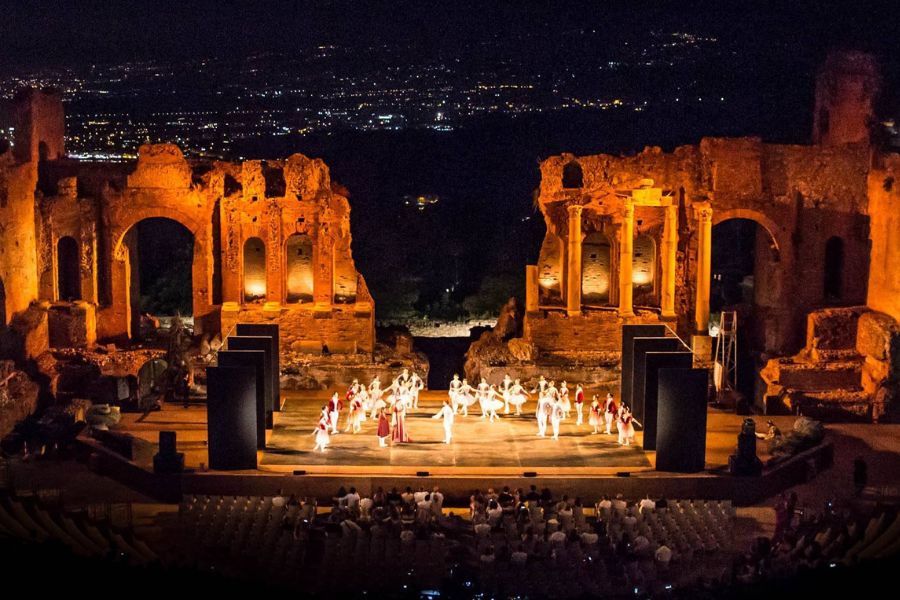
As the performers’ voices filled the air—thanks to the perfect ancient acoustics—I felt a connection to every audience member who had ever sat in these seats.
Setting the Stage: Teatro Antico and Its Timeless Allure
Teatro Antico sits on a Sicilian hillside, a breathtaking monument where history breathes through ancient stones. This place has witnessed over two millennia of human drama, both onstage and off.
Taormina: Where Ancient Greece Meets Sicily
Walking through Taormina feels like stepping into a blend of Greek heritage and Sicilian charm. The cliffside town perches on Monte Tauro, offering jaw-dropping views of the Ionian Sea and Mount Etna.
The ancient theater fits perfectly into the town’s fabric. Narrow, flower-lined streets lead you right to this crowning jewel. Greek settlers founded Taormina in the 3rd century BC, and it quickly became a cultural center.
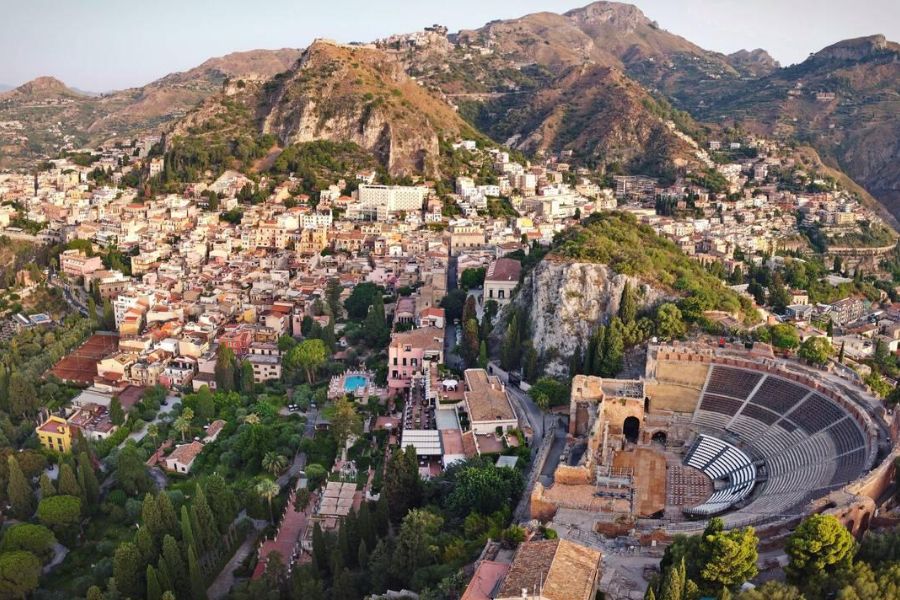
What really sets this location apart is its dramatic setting. The theater was built to showcase the natural landscape, with the sea and Mount Etna as a stunning backdrop.
The Ancient Greek Theatre: Architecture and Legacy
Teatro Antico stands as Sicily’s second largest ancient Greek theater—only Siracusa’s is bigger. Greeks built it in the 3rd century BC, and then Romans expanded and changed it for their own, more combative entertainment.
The design follows classic Greek principles with acoustics that still impress. I stood at the center of the stage, whispered a few words, and the sound reached the top rows. That’s ancient engineering for you.
The semi-circular seating area (cavea) could hold up to 10,000 spectators. Most of what’s visible today comes from the Roman rebuilding, with their brickwork contrasting with the older Greek stone.
Restoration and Preservation Efforts
The teatro’s journey through time hasn’t been easy. After Rome fell, it slipped into disrepair and people even used it as a quarry. Restoration began in the 19th century when they rebuilt the stage.
In recent decades, careful conservation work has stabilized the stones while keeping the place authentic. I spotted some subtle modern interventions—nothing flashy, just enough to help the structure stand strong.
Today, Teatro Antico hosts international film festivals, concerts, and opera. This lively use keeps it from becoming just another static ruin.
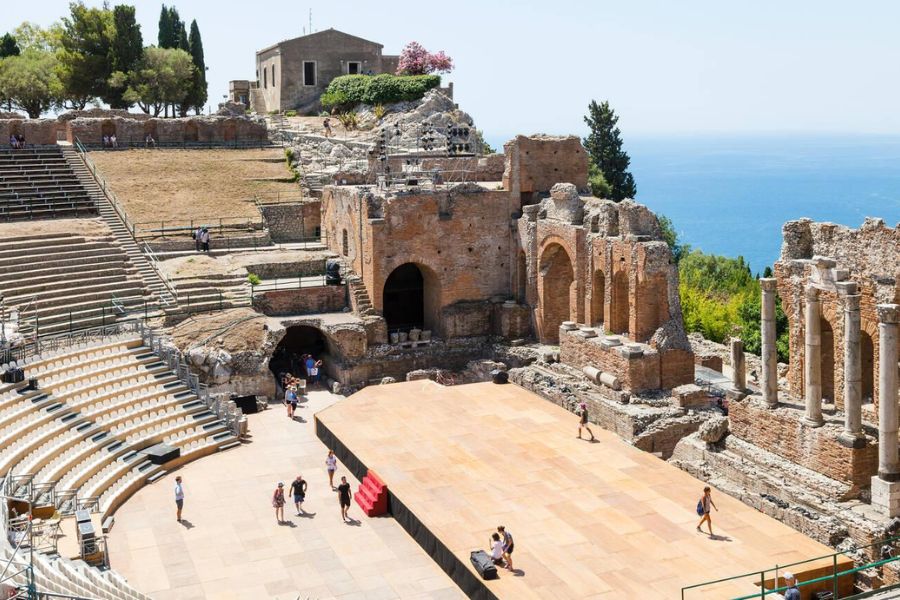
Local authorities keep a close eye on visitor numbers and their impact. Wooden platforms protect the original stone in busy areas, and some fragile sections stay off-limits to preserve them.
A Night at the Opera Amidst Ruins
Going to an opera at Teatro Antico means you get world-class performances with a breathtaking ancient backdrop and Sicily’s natural beauty all around.
The Opera Experience: Music and Drama Under the Stars
The acoustics here? Unreal. Even without modern speakers, every note rings out clear as day through the stone seats. I sat there, a bit spellbound, as the soprano’s voice soared and seemed to mingle with the stars overhead.
The repertoire usually features classics like Puccini’s “Madama Butterfly” and Verdi’s “La Traviata.” Directors often use the natural setting in their staging, which adds something you just don’t get indoors.
When I watched “Carmen” last spring, Mount Etna loomed in the background. Occasionally, it sent up wisps of smoke—honestly, you can’t plan a more dramatic setting.
Performers and Artists Who Enchant the Stage
Teatro Antico draws world-class talent from opera houses across Europe. Many singers see it as a career highlight to perform where ancient Greeks once sat.
The Orchestra Sinfonica Siciliana blew me away with their ability to adapt to the outdoor acoustics. That takes serious skill.
And the costume designers? They create outfits that pop against the stone while still honoring traditional operatic style.
Notable recent performers:
- Maria Agresta (soprano)
- Jonas Kaufmann (tenor)
- Cecilia Bartoli (mezzo-soprano)
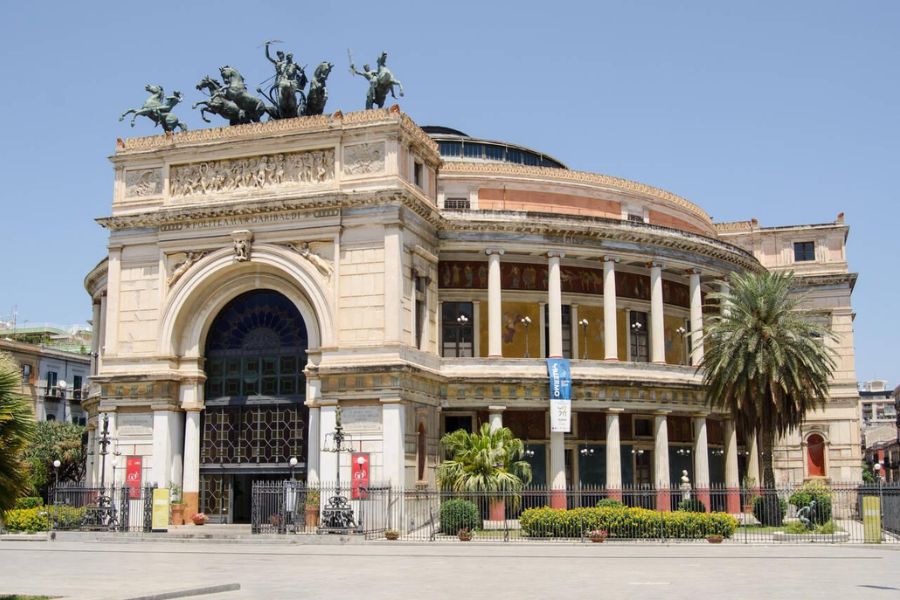
Spring Evenings: Nature, Verdure, and Atmosphere
Spring is probably the best time for a performance here. The weather is mild—warm enough to sit outside but not yet the roasting heat of Sicilian summer.
The landscape bursts with Mediterranean greenery. Lemon trees, olive groves, and bougainvillea fill the air with fragrance.
Arrive early to watch the sunset transform the ancient stones from golden to deep amber. As darkness falls, the theater lights up and the whole place feels magical.
Bring a light shawl or jacket; the evening air gets cool thanks to the sea breeze. Many regulars bring cushions too—those stone seats are not exactly cozy.
Echoes of the Past: Greek Drama and Literary Legends
The ancient stones of Teatro Antico have seen centuries of dramatic performances. From Greek tragedies to modern plays, this theater’s literary heritage connects us to the roots of Western culture.
From Sophocles to Euripides: Antigone, Ajax and More
Standing in the amphitheater, I tried to imagine the original Greek tragedies performed here. Sophocles’ Antigone and Ajax must have sounded powerful echoing off these stones.
I closed my eyes and pictured actors in masks, delivering Euripides’ emotional lines to a rapt audience. The themes—fate, justice, suffering—still hit home, even now.
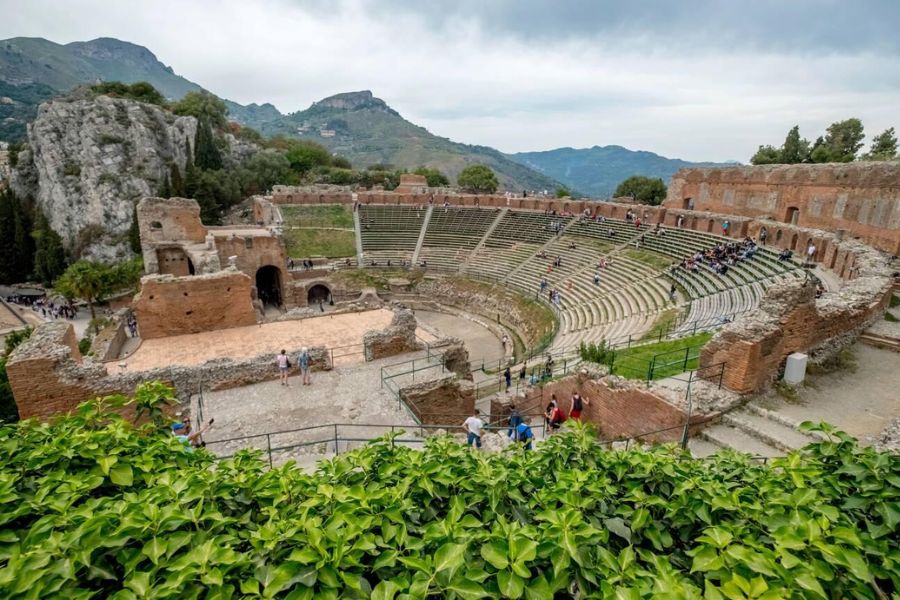
The theater’s design really helped these performances. Even from the top seats, I could hear whispers from the stage. The Greeks clearly knew their acoustics.
Shakespeare and Italian Influences: Othello and Beyond
Teatro Antico has hosted plenty of Shakespearean productions over the years. Othello, with its Mediterranean settings, feels especially at home here.
You can really sense the Italian influence on Shakespeare when his plays are performed in this context. The sun-drenched settings and passionate stories come alive.
Local guides pointed out how Renaissance dramatists linked classical traditions to Shakespeare’s innovations. The teatro bridges these worlds, just as Sicily bridges civilizations.
Byron, James, and Other Notable Visitors
Lord Byron reportedly wept when he first saw Teatro Antico. The dramatic setting between mountain and sea got to him.
Henry James wrote about how the theater embodied “the perfect marriage of nature and art.” I have to agree—watching the sunset here, I felt the same way.
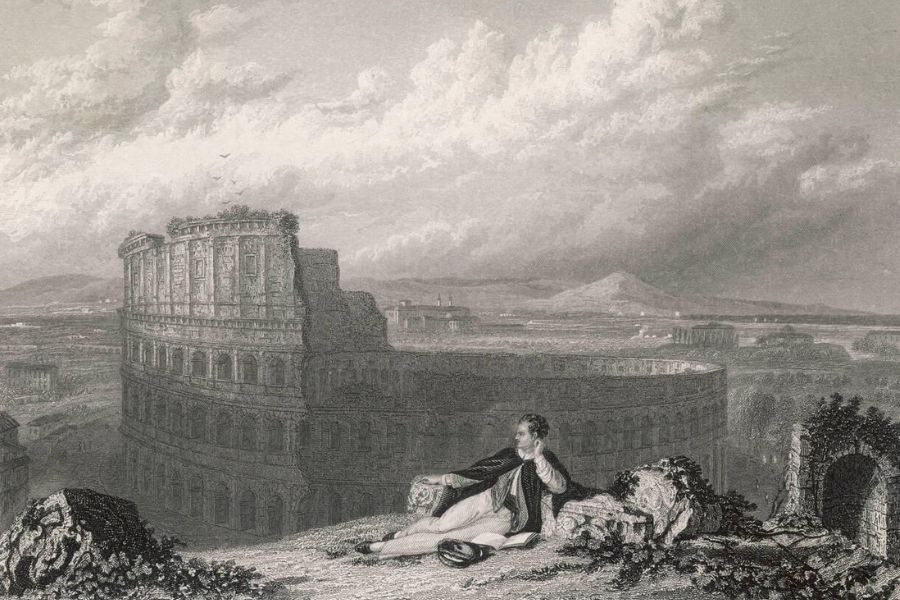
Other literary giants—Goethe, Oscar Wilde, D.H. Lawrence—all made pilgrimages here. Each found inspiration in the theater’s timeless beauty. Walking the same paths as these writers, I felt part of a long tradition of travelers chasing the sublime.
Practical Tips for Visitors
Planning ahead makes a big difference when you visit Teatro Antico di Taormina. I learned that knowing what to expect helps you enjoy the theater without any nasty surprises.
Length of Visit and Wait Time
I spent about two hours exploring and that felt just right. In peak summer (June-August), I recommend coming early (8:30-9:00 AM) or later in the afternoon (after 4:00 PM) to dodge the longest lines and harsh sun.
Wait times can really vary. In summer, I’ve waited up to 45 minutes. In October, I walked right in. The theater now offers evening hours with special lighting—night visits are magical and usually have shorter queues.
Buy tickets online if you can. I saved at least 20 minutes that way. The official site gives you timed entry slots, but they don’t really enforce them strictly.
Health and Accessibility
The theater sits up on a hill with plenty of steep steps and uneven ground. I found the climb moderately challenging, even though I’m pretty fit.
For visitors with mobility issues, there’s some limited help:
- A partial access ramp at the main entrance
- Some viewing areas you can reach with assistance
- Staff are friendly but not specifically trained for accessibility needs
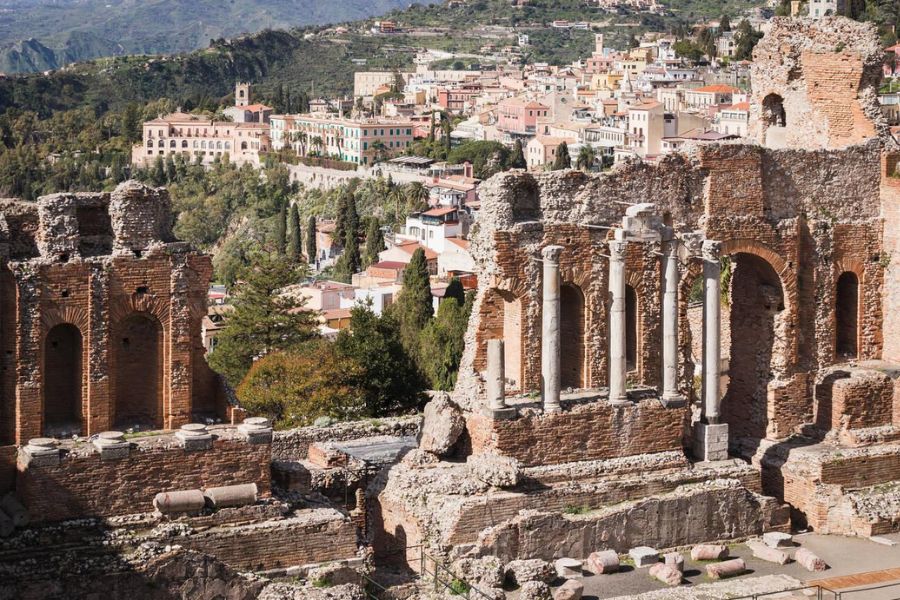
The Mediterranean sun gets intense, especially from 11 AM to 3 PM. I learned the hard way that heat exhaustion is a real risk in summer. Shade is almost non-existent, and the stone reflects heat.
You’ll find water fountains near the entrance, but not inside the theater.
What to Bring and What to Expect
Don’t forget these:
- Comfortable, non-slip shoes (the stones are slippery)
- Water bottle (at least 1 liter each)
- Sun protection (hat, sunscreen, sunglasses)
- Light jacket for evenings (the sea breeze can surprise you)
- Camera with extra battery (the views are worth it)
Facilities are basic. I only saw restrooms near the entrance and a small gift shop. No food vendors inside, so pack snacks.
For evening concerts or opera, dress a notch above casual but keep it practical. I wore nice pants and a button-down. Others showed up in everything from dresses to jeans. Comfort wins—especially when you’re climbing those ancient steps in the dark.
Beyond the Theatre: Exploring the Surroundings
Teatro Antico sits among some of Sicily’s most breathtaking landscapes and cultural gems. You really should wander a bit after your theater visit.
Vines, Flowers, and Cliffs: Sicilian Natural Wonders
Sicily’s natural beauty hits you the moment you leave the theater. Bougainvillea spills down old stone walls—magenta against gold.
The cliffs around Taormina offer dramatic views that rival the theater’s own backdrop. I loved hiking the coastal path in spring, with wildflowers everywhere.
Local vineyards sprawl across Mount Etna’s lower slopes. The volcanic soil gives their wines a unique taste. Many places offer tastings—Nero d’Avola is a must-try.
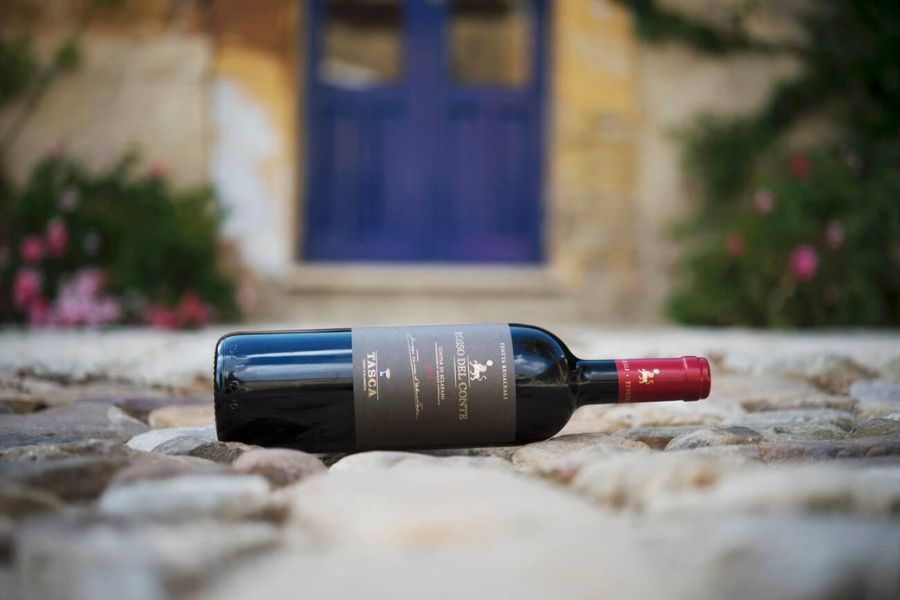
Near the theater, you’ll find Mediterranean gardens. Look for ancient olive trees; they’ve watched over Sicilian history for centuries.
Village Life: St. Peter and the Local Church
Wandering into Taormina’s village center, I stumbled upon the Church of St. Peter. Its Baroque façade stands out, and the cool, quiet interior feels peaceful after the bustling streets.
Each evening, villagers gather in the piazza. It’s a daily ritual—a glimpse of real Sicilian life that hasn’t changed much in generations.
The church bells mark time all day. Their melodic chimes are especially beautiful at sunset.
Nearby cafés serve classic cannoli and almond granita. I suggest stopping at Pasticceria Maria for the best sweets—these recipes have been passed down for generations.
Nearby Cities: Venice, Milan, Munich, and Susa
Venice isn’t in Sicily, but honestly, it’s a fantastic addition if you’re planning a longer Italian adventure. You can stroll across the Bridge of Sighs or drift along the Grand Canal after just a 90-minute flight from Catania.
Milan brings you right into the heart of Italian fashion and culture. You’ll get there from Sicily in about two hours by plane, and that Duomo? It’s stunning—plus, the city’s design vibe is something you have to see for yourself.
If you’re coming from abroad, Munich often has direct flights to Sicily in the summer. It’s pretty handy as a European gateway, especially if you want to tack on a little German flavor.
Head down the coast from Taormina and you’ll find the ancient town of Susa (Syracuse). Its Greek ruins give you a different angle on history compared to Taormina’s theater. The Archaeological Park here shows off some seriously impressive Greek and Roman remains.
Bridges, Streams, and Historical Sites
Several ancient stone bridges cross the streams near Taormina. You’ll spot the Alcantara Gorge, which cooling lava formed long ago.
Crystal-clear water rushes through those dramatic basalt columns. It’s honestly a bit mesmerizing.
Historical sites pop up all around the theatre. The Naumachie wall, dating back to Roman times, probably belonged to an old gymnasium.
Tiny streams wind their way through the region, creating little natural oases. I stumbled onto a quiet spot near the Fountain of the Minotaur—just right for catching my breath after the theatre’s sensory overload.
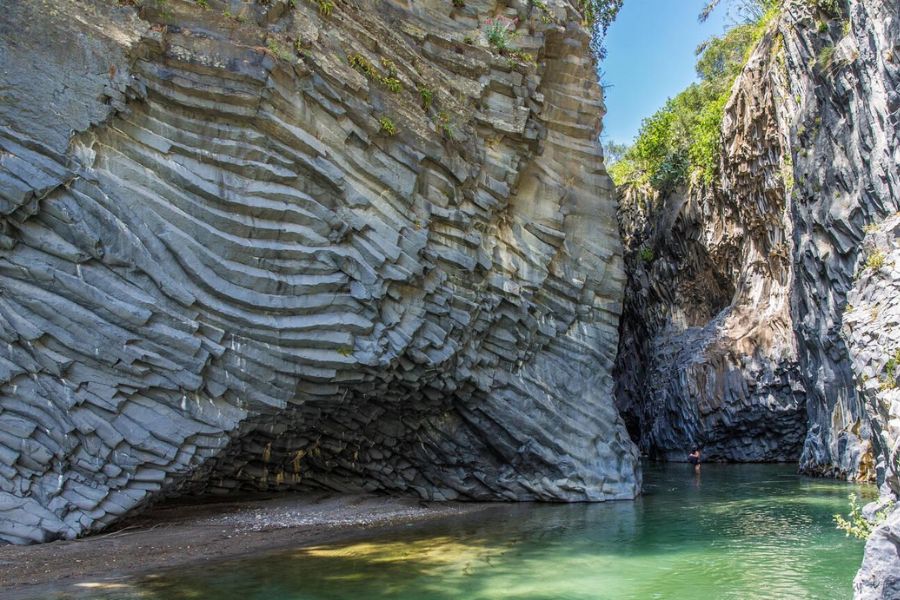
Medieval watchtowers still stand along the coastline, almost like they’re keeping watch for something. If you climb up to Castelmola, that fortress village above Taormina, you’ll get panoramic views of the theatre, Mount Etna, and the glittering Mediterranean.

